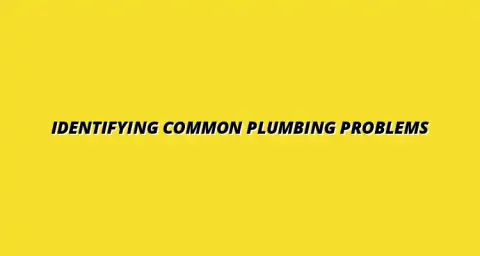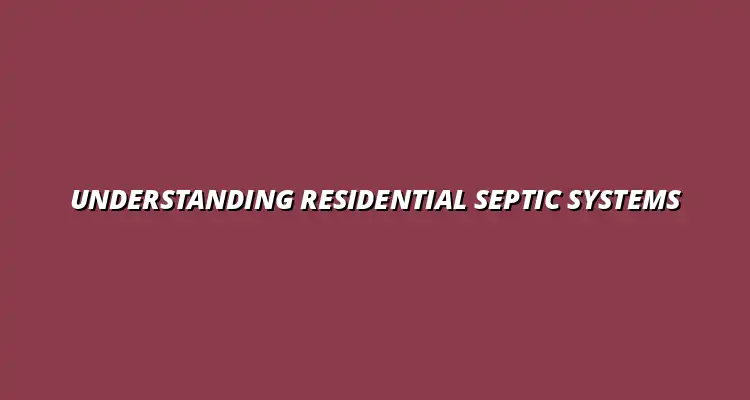
- Plumbing Basics
- Dec 26
2025-02-05
Septic systems are a crucial part of residential plumbing, especially in areas without access to public sewer lines. They manage wastewater from homes by treating it on-site, which is essential for protecting our environment. Understanding how septic systems work can help homeowners make informed decisions about maintenance and care.
At the heart of every septic system is the septic tank, which plays a vital role in breaking down and treating household waste. Knowing the purpose of these tanks and their components will provide a clearer picture of how they function in our daily lives.
A septic tank is a large, underground container that collects and treats sewage from a home. Its primary purpose is to separate solids from liquids before the wastewater is distributed into the drain field. This process is fundamental to keeping our surroundings clean and safe.
Septic tanks are designed to allow waste to settle, where bacteria break down organic matter. This breakdown is critical for reducing the volume of sludge and ultimately preventing contamination of groundwater.
The role of septic tanks in wastewater management cannot be overstated. They help to efficiently manage and treat household waste, preventing harmful substances from entering the environment. Not only do they process waste, but they also reduce the risk of sewage backups and unpleasant odors.
Here are some of the critical functions of septic tanks in wastewater management:
Understanding the difference between septic systems and public sewer systems is vital for homeowners. While public sewer systems transport wastewater to a treatment facility, septic systems treat waste on-site. This can have several implications for homeowners.
Here’s a comparison of both systems:
A septic system consists of several essential components that work together to treat wastewater. Understanding these components can help you appreciate how your system functions and the importance of maintaining each part. The main components include the septic tank, drain field, and soil filtration system.
Each of these components plays a unique role, ensuring that wastewater is treated properly before it re-enters the environment. Let's explore what makes up a residential septic system and how it contributes to effective waste management.
The primary components of a septic tank system include:
The septic tank is typically made of concrete, fiberglass, or plastic. Its structure allows for the separation of solids, liquids, and scum layers, which is crucial for effective waste treatment. Understanding the functionality of these tanks can help homeowners ensure they're operating efficiently.
Key features of septic tank structure include:
The drain field is essential for dispersing treated wastewater back into the soil. Proper functioning of the drain field is necessary to prevent issues such as backup problems or contamination of local water sources. It allows the soil to perform the final stages of wastewater treatment. Understanding sump pumps can also be helpful in preventing backups in your home.
Some important aspects of drain fields include:
Wastewater travels through a septic system in a specific manner. Understanding this journey can help homeowners grasp how essential each component is in treating waste. The movement of waste starts from your home and goes through various stages of treatment.
Here’s a brief overview of how wastewater moves through the system:
The journey of wastewater starts when it leaves your home through pipes leading to the septic tank. From there, it undergoes a treatment process that is both physical and biological. This journey is crucial for ensuring that only treated water reaches the environment. Issues with your dishwasher drainage can sometimes indicate problems elsewhere in your plumbing.
Key steps along the journey include:
In the septic tank, a separation process takes place that involves solids, liquids, and scum layers. Understanding these layers can help homeowners appreciate how their system works. Each layer has a specific role in treatment.
The three layers include:
When it comes to septic systems, homeowners often have many questions. Understanding these commonly asked questions can lead to better maintenance and care of these systems. Let’s dive into some of the most frequent inquiries regarding septic tank operations!
One common question that many homeowners have is, “What should not be disposed of in a septic tank?” It's crucial to know what can harm your system. Here are some items you should avoid:
Another frequent question is, “How long can a septic tank last before replacement?” The lifespan of a septic tank varies based on several factors. Typically, a well-maintained septic tank can last anywhere from 20 to 40 years. Regular maintenance plays a big role in extending its life!
To ensure your septic system functions effectively, it’s vital to understand the materials that can disrupt its operation. By avoiding certain items, you can prevent clogs and costly repairs. Regular maintenance of your water heater is important too, as issues there can sometimes affect your overall plumbing system.
Septic systems can be quite durable when properly maintained! Factors that affect their lifespan include the type of material used, the size of the tank, and the frequency of maintenance. Regular inspections and pumping can help you assess the health of your tank, so keep an eye on these signs of wear:
Maintaining your septic system isn’t just about avoiding problems; it's also about enhancing its efficiency! Consider these best practices to ensure your septic system runs smoothly and lasts longer. Regular plumbing maintenance, including checking your water heater, is a good habit to adopt.
One of the best ways to support your septic system is through water conservation. By being mindful of your water usage, you can reduce the load on your tank. Here are some simple strategies:
Additionally, choosing the right cleaning products is essential for maintaining the health of your system. Products that are too harsh can kill the beneficial bacteria in your tank. Opt for septic-safe products that are labeled as non-toxic and biodegradable!
Conserving water not only benefits your septic system but also helps the environment. Implementing these strategies can significantly reduce the amount of water flowing into your septic tank:
When selecting cleaning products, look for those that are labeled safe for septic systems. Avoid products with harsh chemicals or antibacterial agents that can disrupt the natural balance of your tank. Instead, you can use:
Another important aspect of septic system ownership is being aware of local regulations. Understanding and adhering to these rules can protect your property and the environment! For more complex plumbing issues, consider contacting a professional plumber.
Local health codes regulate how septic systems should be installed, maintained, and inspected. Compliance is essential for several reasons:
To keep up with the latest regulations and guidelines, homeowners should access local resources. Simple plumbing repairs can often be handled by homeowners, but more complex issues should be addressed by a professional.
Understanding how septic systems work and how to care for them is crucial for every homeowner. With proper maintenance and knowledge, you can ensure that your system remains efficient and functional for years to come!
Planning for the future of your septic system is vital. As needs change — such as adding new family members or renovations — you may need to upgrade or expand your system. Here are some steps to consider:
As your household changes, so may your septic system requirements. When considering an upgrade, think about:
Finally, it’s important to promote community awareness about septic systems. Educating yourself and your neighbors can lead to better practices and a healthier environment for everyone!
